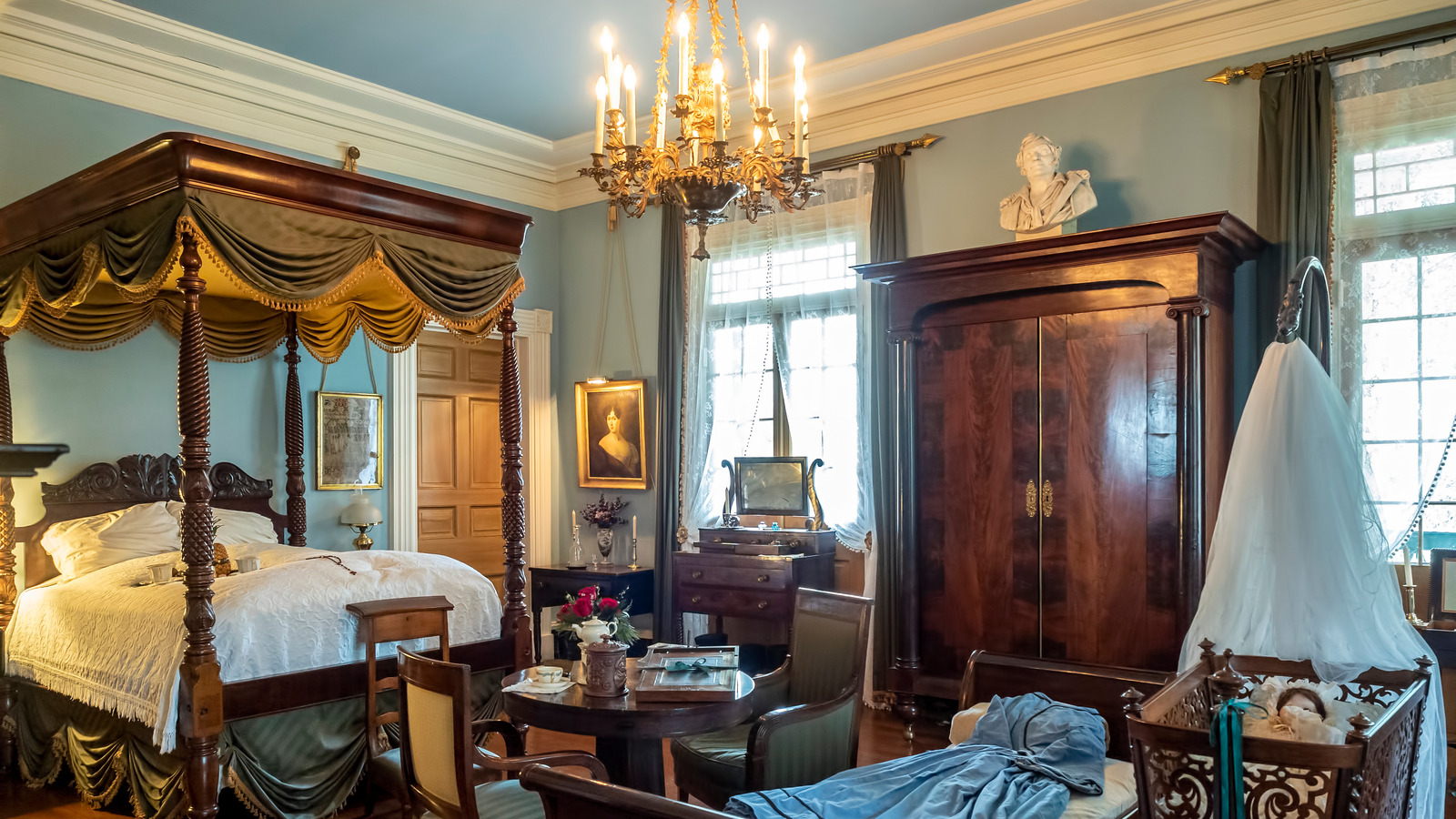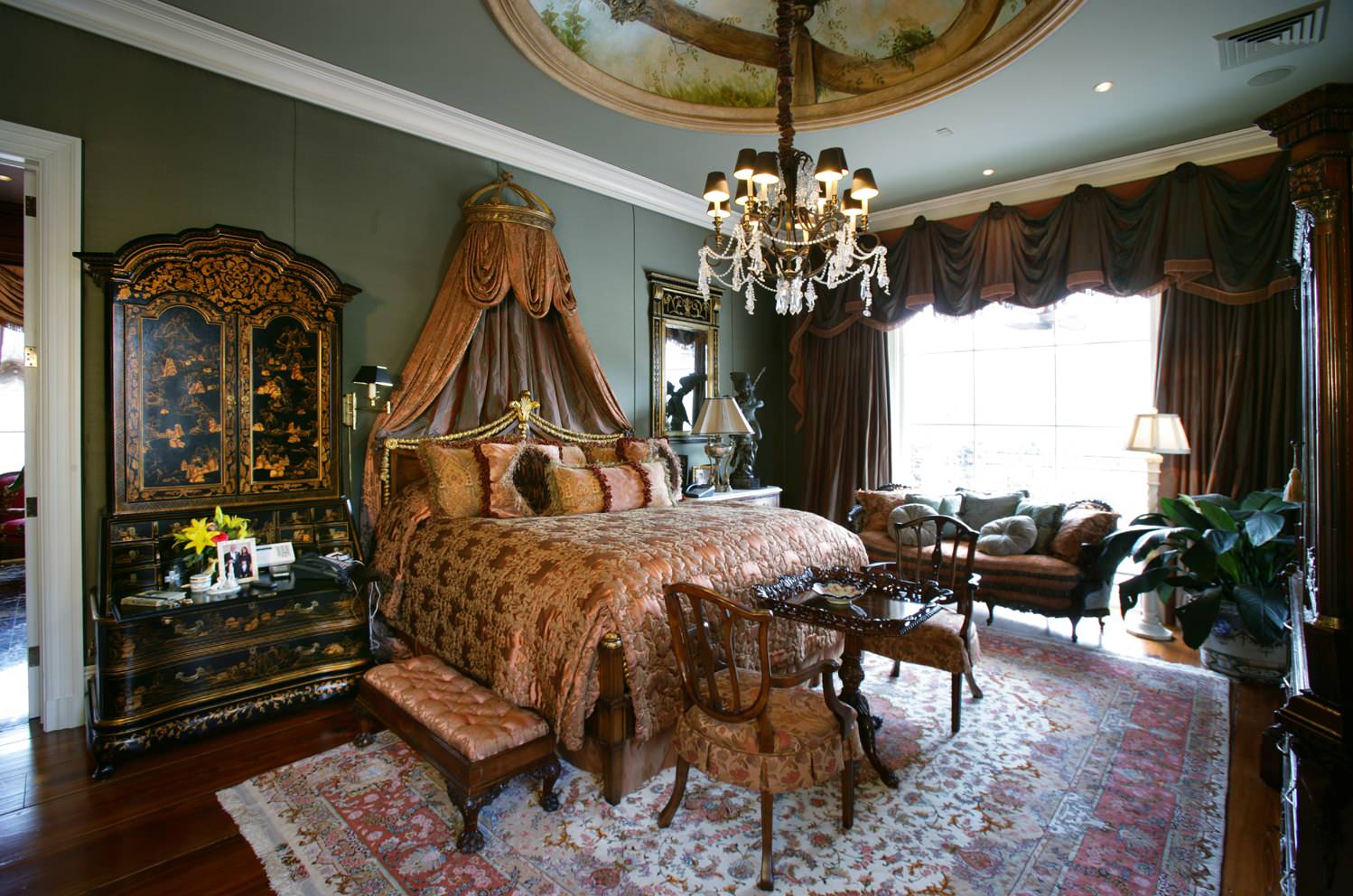The Essence of Victorian Style: Victorian Style Master Bedroom

The Victorian era, spanning from 1837 to 1901, witnessed a dramatic shift in design aesthetics, marked by the rise of a distinct style that became synonymous with the period. Victorian design, reflecting the societal and technological changes of the time, embraced a rich tapestry of influences, resulting in a style characterized by opulence, grandeur, and intricate details.
The Influence of the Industrial Revolution and Social Changes
The Industrial Revolution played a pivotal role in shaping Victorian design. Advances in manufacturing techniques allowed for the mass production of furniture, textiles, and decorative elements, making elaborate designs accessible to a wider segment of society. This era also saw a surge in wealth and prosperity, leading to an increased demand for luxurious and ornate interiors.
The Victorian era was also a time of significant social change, with the rise of the middle class and a growing emphasis on domesticity. Homes became more than just places of residence; they evolved into spaces for family gatherings, entertainment, and the display of wealth and status. This shift in societal values further fueled the popularity of elaborate and expressive interior design.
Famous Victorian Designers and Their Contributions
The Victorian era witnessed the emergence of several renowned designers who left an indelible mark on the style. These individuals, through their innovative designs and craftsmanship, shaped the aesthetic of Victorian interiors.
- William Morris: A prominent figure in the Arts and Crafts movement, Morris championed a return to traditional craftsmanship and natural forms. His designs, characterized by intricate patterns, vibrant colors, and handcrafted details, emphasized the beauty of handmade objects.
- Charles Rennie Mackintosh: Mackintosh, a Scottish architect and designer, was known for his minimalist and geometric designs. His work, often featuring stark lines, simple forms, and a restrained use of color, stood in contrast to the opulence of traditional Victorian style, foreshadowing the emergence of modernism.
- Christopher Dresser: Dresser, a pioneer of industrial design, believed in the functional and aesthetic potential of machine-made objects. His designs, characterized by a blend of traditional and modern elements, often incorporated innovative materials and techniques, reflecting the influence of the Industrial Revolution.
Master Bedroom Design Elements

The Victorian master bedroom is a haven of opulence and elegance, characterized by intricate details, rich fabrics, and a sense of grandeur. These design elements work together to create a space that is both inviting and awe-inspiring.
Furniture
Victorian furniture is known for its elaborate carvings, intricate details, and heavy construction. The key pieces in a Victorian master bedroom include:
- Four-poster beds: These beds, often made of mahogany or walnut, feature tall posts that support a canopy. The canopy can be made of fabric, such as velvet or silk, or even a combination of materials. It provides a sense of privacy and seclusion, enhancing the bedroom’s luxurious atmosphere.
- Dressing tables: These tables are essential for a Victorian lady’s toilette. They often feature a large mirror, drawers for storing jewelry and cosmetics, and a padded stool for seating. The dressing table is a statement piece, reflecting the era’s emphasis on personal grooming and elegance.
- Wardrobes: Victorian wardrobes are typically large and imposing, with intricate carvings and decorative hardware. They are designed to accommodate a significant amount of clothing, reflecting the era’s emphasis on formal attire.
- Chaise longues: These long, curved sofas are perfect for lounging and reading. They often feature plush upholstery and decorative accents, such as tassels or fringe. Chaise longues add a touch of luxury and sophistication to the bedroom.
Color Palette
Victorian color palettes are characterized by deep, rich hues that create a sense of warmth and sophistication. Some of the most popular colors include:
- Burgundy: A deep, rich red that exudes warmth and elegance. It is often used for upholstery, curtains, and wall coverings.
- Emerald green: A luxurious green that evokes nature and tranquility. It is often used for upholstery, curtains, and accents.
- Navy blue: A sophisticated and timeless color that creates a sense of depth and richness. It is often used for upholstery, curtains, and wall coverings.
Materials
Victorian interiors are known for their use of high-quality materials, including:
- Wood: Mahogany, walnut, and oak are popular choices for furniture, floors, and trim. These woods are known for their durability, beauty, and rich color.
- Velvet: A luxurious fabric that adds a touch of opulence and comfort to the bedroom. It is often used for upholstery, curtains, and bedspreads.
- Silk: A delicate and lustrous fabric that adds a touch of elegance and sophistication. It is often used for curtains, bedspreads, and decorative accents.
- Lace: A delicate and intricate fabric that adds a touch of femininity and romance. It is often used for curtains, bedspreads, and tablecloths.
- Ornate metalwork: Iron, brass, and silver are often used for decorative accents, such as fireplace screens, candle holders, and door handles. These metals add a touch of sparkle and grandeur to the bedroom.
Lighting
Lighting plays a crucial role in creating the desired ambiance in a Victorian master bedroom.
- Chandeliers: These elaborate fixtures are often made of crystal, brass, or silver. They add a touch of drama and grandeur to the bedroom.
- Sconces: These wall-mounted fixtures provide soft, ambient lighting. They are often placed on either side of the bed or mirror.
- Lamps with decorative shades: Table lamps and floor lamps with ornate shades add a touch of elegance and personality to the bedroom. The shades can be made of fabric, glass, or metal, and often feature intricate designs.
Patterns and Textures
Victorian interiors are known for their use of patterns and textures, which add depth and visual interest to the space.
- Floral prints: These prints, often featuring roses, lilies, and other flowers, add a touch of romance and femininity to the bedroom.
- Damask: A woven fabric with a raised pattern, often featuring floral or geometric designs. It adds a touch of elegance and sophistication to the bedroom.
- Intricate carvings: Victorian furniture is often adorned with intricate carvings, which add a touch of artistry and craftsmanship to the bedroom.
Victorian Master Bedroom Layout, Victorian style master bedroom
The layout of a Victorian master bedroom should be designed to create a sense of flow and functionality. Here is a possible layout:
- Four-poster bed: Place the bed in the center of the room, facing the window. This allows for natural light to flood the room and creates a focal point for the space.
- Dressing table: Place the dressing table next to the bed, facing the window. This allows for natural light to illuminate the mirror and provides a convenient place for a lady to prepare for the day.
- Wardrobes: Place the wardrobes on either side of the bed, creating a sense of symmetry and providing ample storage space.
- Chaise longue: Place the chaise longue in a corner of the room, creating a cozy spot for reading or relaxing.
- Lighting: Use a combination of chandeliers, sconces, and lamps to create a warm and inviting ambiance. Place sconces on either side of the bed and a chandelier over the dressing table.
Modern Interpretations of Victorian Style

While the Victorian era is known for its grandeur and opulence, modern interpretations of the style offer a fresh perspective, embracing the essence of Victorian design while adapting it to contemporary living. Modern designers skillfully blend Victorian elements with modern sensibilities, creating spaces that are both stylish and functional.
Simplified Victorian Motifs and Muted Color Palettes
Modern interpretations of Victorian style often utilize simplified Victorian motifs, creating a more streamlined and contemporary aesthetic. Instead of intricate floral patterns and heavy ornamentation, modern designers opt for subtle details like geometric patterns, delicate floral accents, or minimalist interpretations of traditional Victorian motifs. This approach avoids overwhelming the space and allows the Victorian elements to complement rather than dominate the overall design.
The use of muted color palettes is another hallmark of modern Victorian style. Instead of the rich, saturated hues often found in traditional Victorian interiors, modern designers favor softer, more neutral shades. This creates a calming and sophisticated ambiance, making the space feel more contemporary and inviting. Commonly used colors include soft grays, blues, greens, and creams, often accented with pops of bolder color to add visual interest.
